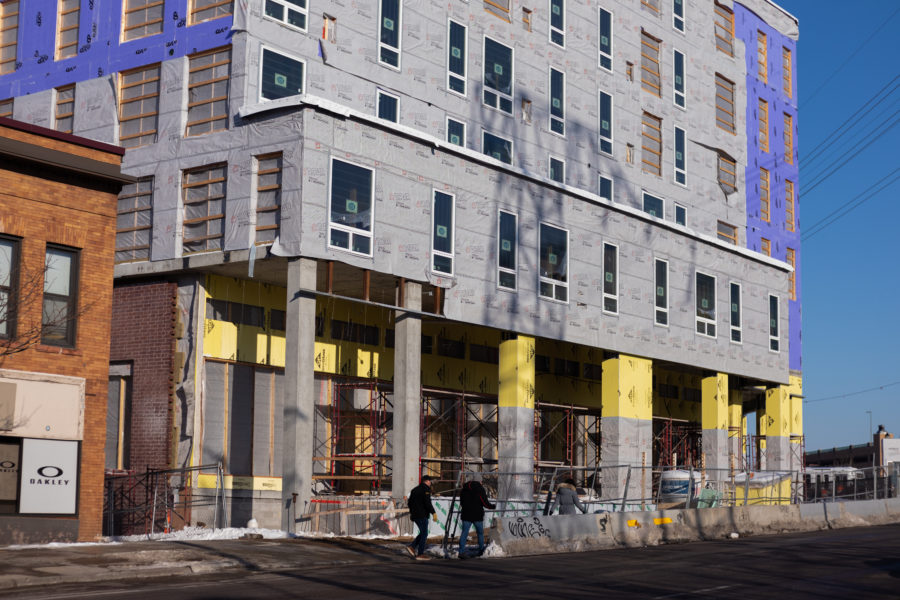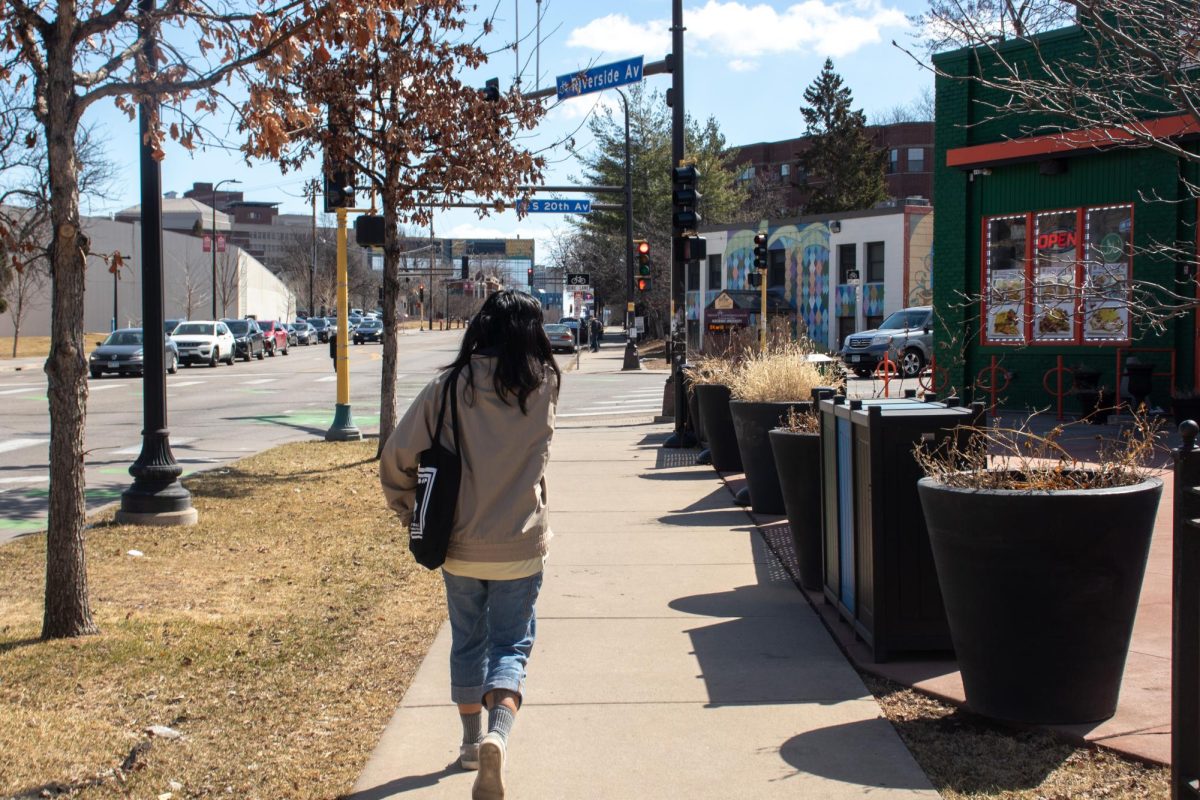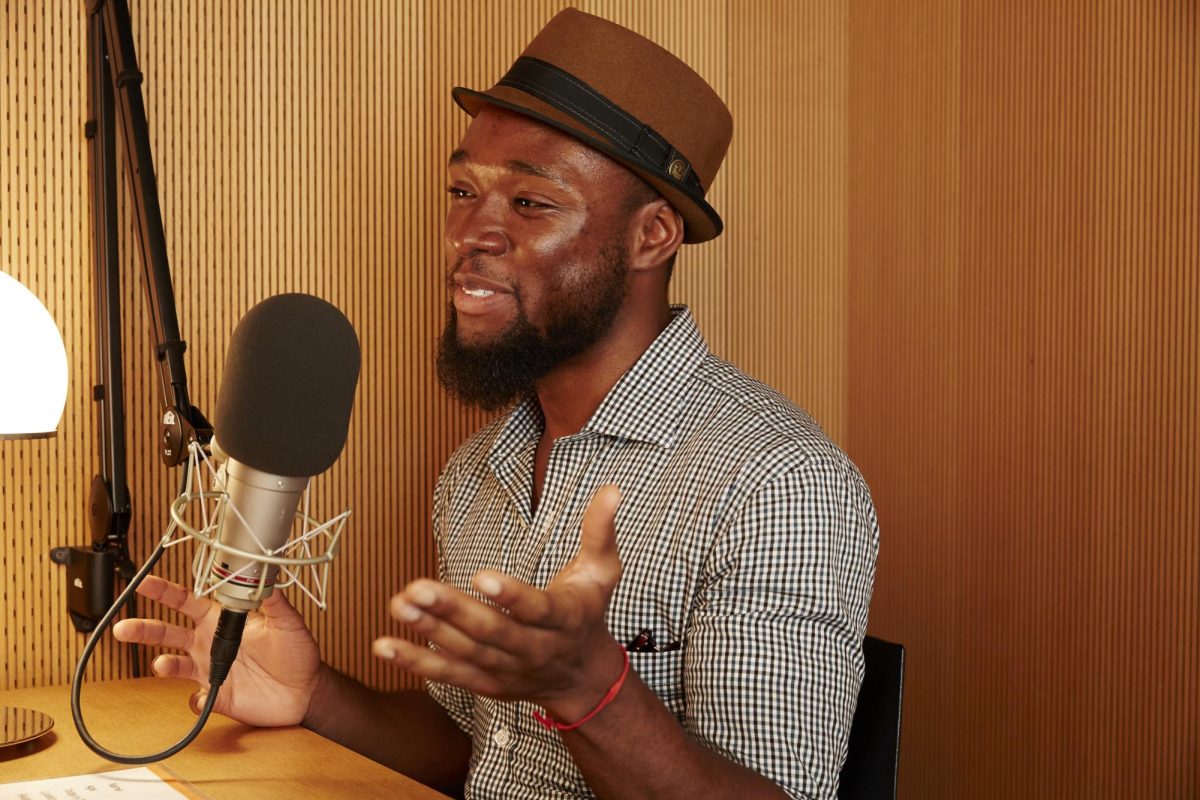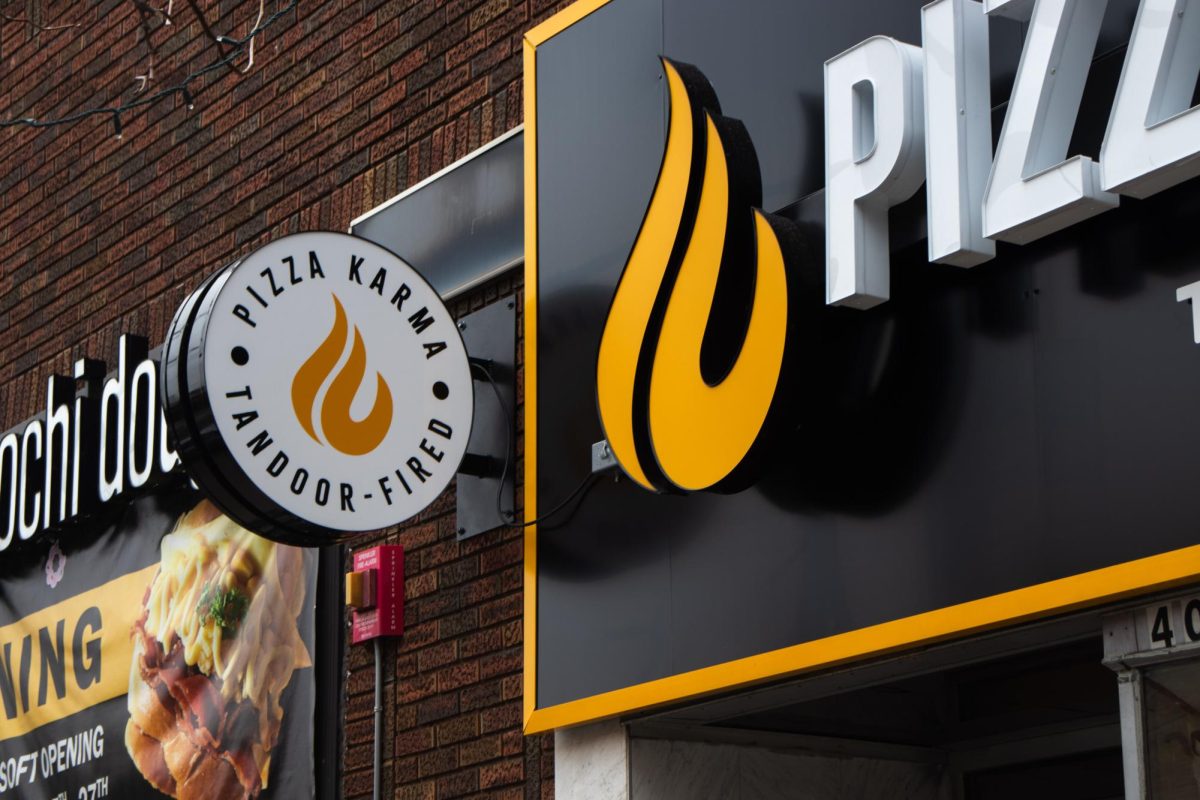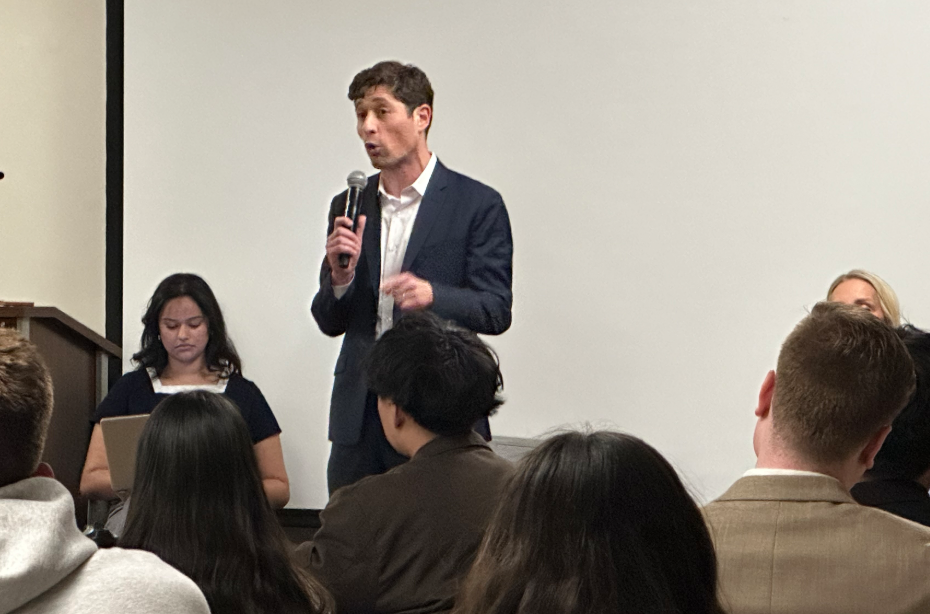Several Dinkytown buildings are under renovation this year, as many old houses were torn down to be replaced with new apartment complexes.
As new buildings pop up, developers and the community work together to create a better living environment for students and non-student residents. Developers aim to include student voices in their work, while locals hope to preserve Dinkytown’s history.
Historic Dinkytown
Different perspectives on the future of student living could mean less road traffic, more pedestrian-friendly streets, student art shows and the preservation of historic buildings. Preserve Historic Dinkytown (PHD), a nonprofit organization, aims to maintain the history of Dinkytown despite new construction.
PHD Founder Kristen Eide-Tollefson spoke about the role the organization plays in maintaining Dinkytown’s identity.
“Preserve Historic Dinkytown started with a fairly very simple effort: to try to preserve the legacies, the dignity, of Dinkytown for students across generations,” Eide-Tollefson said. “Dinkytown is a place for students to learn new ways of being in community and to learn new ways of being themselves while being safe and supported.”
Eide-Tollefson said she hopes to keep Dinkytown a safe place for students to grow and learn and thinks the best way to do this is to preserve the integrity of Dinkytown itself.
“The historic business district, the four inside blocks of Dinkytown, has served the city for 100 years. The city decided only to keep the buildings that were in the 1930s or earlier, and we are grateful for that historic designation,” Eide-Tollefson said. “It is challenging because there is so much density in those four blocks.”
Dinkytown has grown and changed over the years as the University’s enrollment has increased, leading to more students requiring nearby housing, according to Eide-Tollefson.
“It concerns [PHD] that student housing is so expensive,” Eide-Tollefson said. “The question is: how else could this housing be used if there are no students to fill it? We are very concerned about how these buildings can be used in the future.
Eide-Tollefson said she would love to see more co-op-style student housing rather than just apartments to allow students to have a larger role in governing how they live. She said co-ops allow students to engage with leadership and community.
“I think that is an empowering way to live because of the ability to shape policy and opportunities to participate in the governance of the co-op,” Eide-Tollefson said. “Our ideal at PHD is a community council that includes business owners and students in the governing of Dinkytown.”
A new vision
Eide-Tollefson is not the only one invested in a vision of student perspectives shaping the future of Dinkytown. Many developers are now looking at ways to tailor their construction to the needs of students.
Jack Boarman, senior design leader and CEO of BKV group, spoke about his role in the new Dinkytown construction. BKV Group owns the Marshall as well as two new Dinkytown projects, the Standard and Identity Dinkytown, done by Landmark Properties and CA Ventures respectively.
“The city planning guidelines are the starting point for project designs. We work with the Marcy Holmes Neighborhood Association as well,” Boarman said. “The blocks between the 14th and 15th [Avenues] have the highest density. This block is slated for all residential whereas blocks south of University are core for retail sights.”
The Standard will be Landmark Properties’ first development project in Minnesota. The apartment is a 1,021-bed student housing community within walking distance of the University. The Standard will offer several floor plans ranging from studios to five-bedroom units with 30 affordable housing units.
The Standard is currently under construction at the corner of 15th Avenue Sixth Street. Boarman said the Standard is being designed as a very student-specific living space made for those attending nearby colleges.
“Landmark is an experienced student housing creator. They are very student-centered. The amenities are all designed with students in mind,” Boarman said. “Security and overall safety are very important to students and we keep that in mind.”
Amenities will include an outdoor pool area with a jumbotron, sun deck, cabanas, outdoor grilling stations, rooftop hot tub, fitness center, clubhouse, gaming lounge, study lounge and Amazon package lockers. Construction is underway and estimated to be completed in the fall of 2025.
BKV’s other project, Identity, which will be located at the corner of 15th Avenue and Fourth Street, plans to start renting in fall 2023. There will again be options from studios to five-bedroom apartments available.
Identity amenities will include a fitness center, golf simulator, tanning beds and a study lounge. Identity will also bring back one of Dinkytown’s institutional names among University students.
“BKV includes retail into our residential communities as much as possible,” Boarman said. “The CA Ventures project will relocate the McDonald’s on the corner of the University as a part of the apartment building. This will include outdoor seating, which it did not before.”
Prices for both apartment complexes are not listed yet. Rent at other Standard locations in the Midwest is generally anywhere from $1,000-1,700 a month. Rent at CA Ventures’ other apartment complex near campus, HERE MN, is generally about $1,300-2,300.
Safety and security
Thomas Fisher, director of the Minnesota Design Center, works with urban development and housing. Although Fisher is not directly involved with any current Dinkytown construction, he said the University has asked him to look into increasing safety on 13th and 14th streets.
Fisher and his team are proposing making the University streets more pedestrian-focused to slow down traffic.
“The University is concerned about safety. One way urban areas can be safer is [to have] more eyes on the street but also to make it more difficult for people in vehicles to get away,” Fisher said. “We are looking at making the streets more bike and pedestrian friendly. Less vehicle-friendly [to] slow down traffic and make it more difficult for cars to get away.”
Outside of public safety, Fisher said he is also working with students and developers on a new public art piece.
He said the community would love more art in the area and developers would enjoy displaying students’ talent. Fisher said this could be in the form of a student-created mural for the Standard.
“We have been talking with the community about a more dynamic model of public art, maybe an art curation so there could be art around the building,” Fisher said. “There was recognition by that developer of the talent from students right next door, and they hope to leverage it in the public art process. I believe they will produce a public art piece that engages students in the process.”


